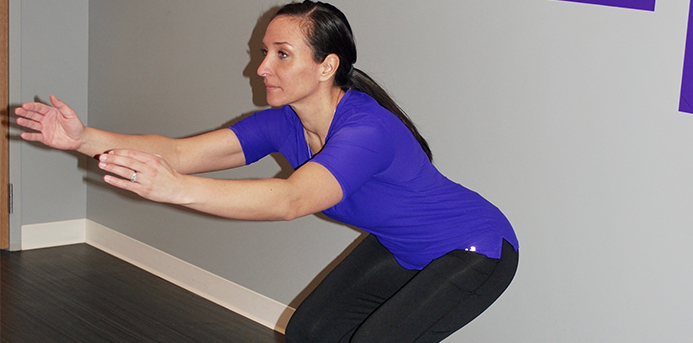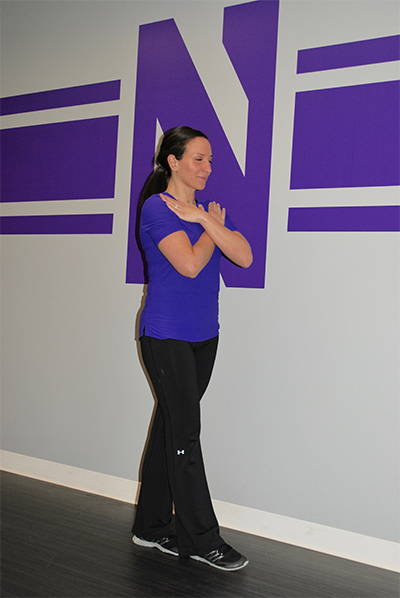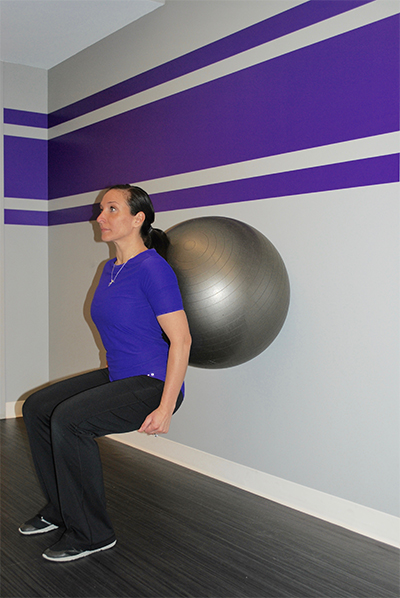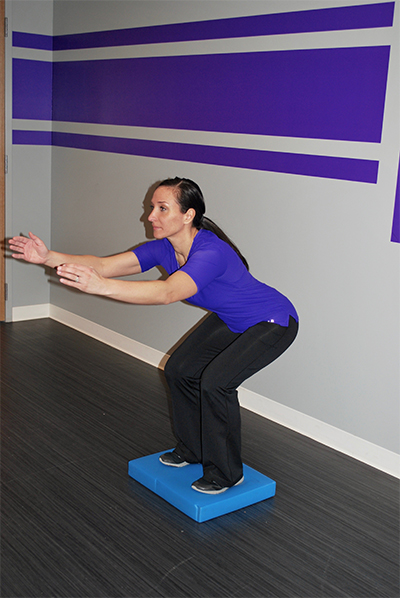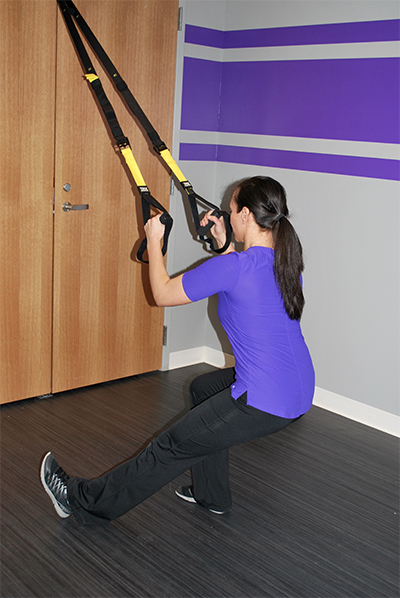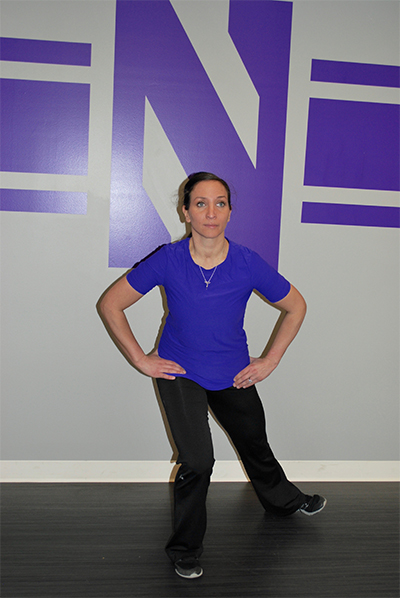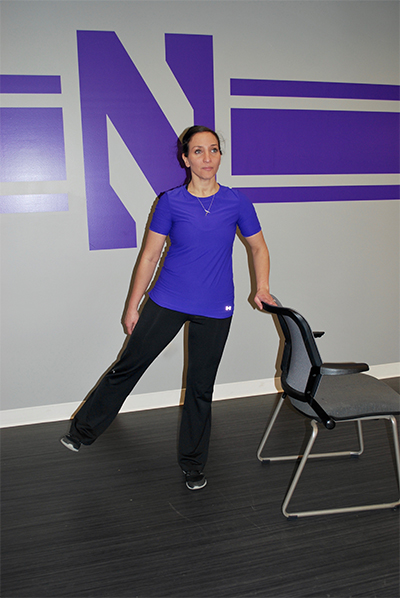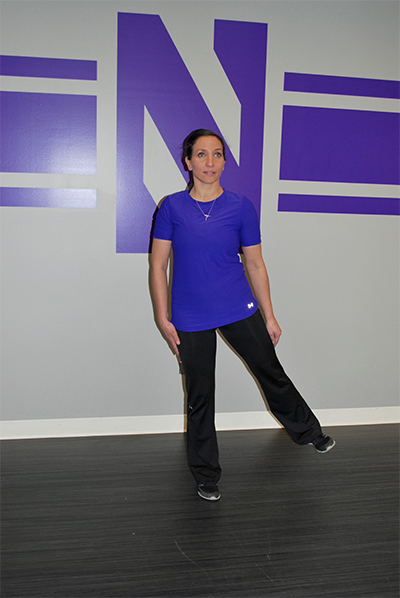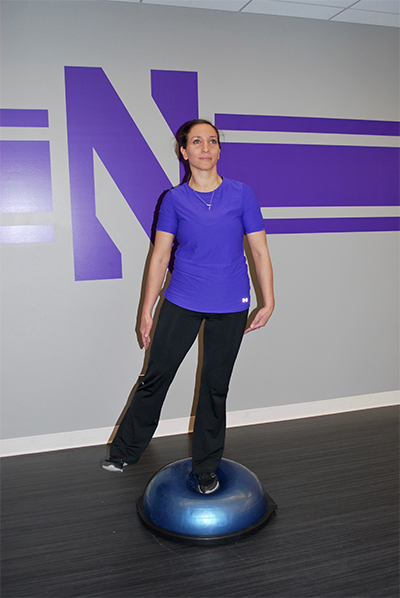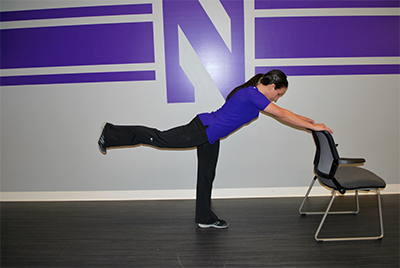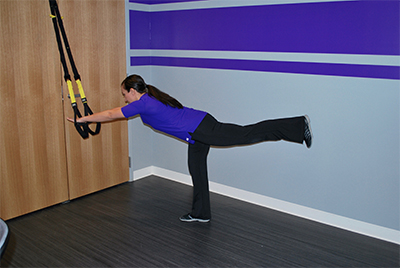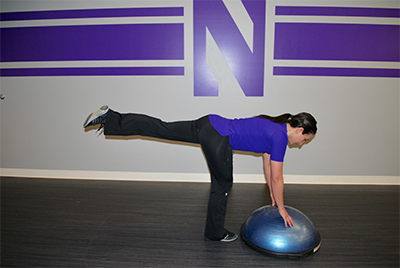Balance is a hot topic when it comes to fitness. Balance tools like Bosu, TRX and wobble boards, once limited to physical therapy, are now standard in health clubs and even home gyms.
We generally worry about balance for our parents and grandparents. Falls are the leading cause of injuries among adults 65 years and older, according to the Centers for Disease Control. Falls lead to hip fractures and brain injuries, often debilitating for older adults. But balance is an important skill, no matter your age. Beginning around age 30 you begin to lose muscle mass, your vision may not be as sharp, and eventually your hearing will decline — factors that impact your ability to stay upright. Good balance can help you catch yourself when you slip on the ice, but may also be the skill that helps you improve your golf game, win your tennis match, or set a new personal best during a 5K.
“Balance is a complex system of sensory input and motor output,” explains Dr. Eric Chehab of the Illinois Bone & Joint Institute. “Sensory inputs include touch, equilibrium from the inner ear, sight and sensors in the joints. The inputs are processed by the brain, then output with appropriate muscle contraction to keep you upright and balanced.”
With good balance, your body quickly senses, processes and moves to keep your equilibrium. “Balance is a ‘use it or lose it’ skill. You must practice, practice, practice,” stresses Chehab.
With good balance you will have:
- better functional mobility for all your activity, including activities of daily living
- reduced risk of injury
- better posture
- improved coordination
- better, more efficient workouts
- improved fitness and sports performance
Test your static balance with the Sharpened Romberg Test from the American Council on Exercise (ACE). Recruit a friend or family member to take this test with you to stay safe and help keep time.
1. Stand in bare feet on an even surface
2. Stand in a doorway, to prevent a fall if you lose your balance
3. Place your feet in tandem stance or heel-toe position
4. Fold your arms across your chest, hands to opposite shoulders
5. Once stable, close your eyes
6. Hold this position for 30 seconds, minimum, or up to 60 seconds for optimal results
7. Switch the position of your legs and test the other side
If you aren’t able to hold the position for 60 seconds on each leg, this is your cue to add more balance training to your fitness routine.
Balance training involves strengthening the muscles of the lower body and your core. The American Council on Exercise recommends a progression of balance exercises for all ages and abilities. For those with poor balance the first few progressions may offer enough challenge.
1. Bring your feet closer together
2. Raise your arms overhead
3. Move your arms in all directions, changing the focus of your gaze
4. Close your eyes
5. Stand on one foot
6. Add an uneven surface like a pillow, Airex balance pad or a Bosu
Ashlee Hoffman, assistant director of fitness and wellness at Northwestern University, stresses balance work for all her clients.
“Balance is the foundation to movement. From top level athletes to active aging, balance is crucial for injury prevention and long-term health.”
Ashlee recommends the following exercises to build strength and improve your balance. She offers three levels for each exercise, progressing to the most challenging. Perform one set of 10, working toward three sets.
Squat
Level 1: TRX — Hold the handles, feet hips distance apart, head up, shoulders back. Hinge at the hip, stick your butt back, sink into a squat and push through your glutes to rise.
Level 2: Stability Ball Squat — With your head up and shoulders back, you’re your legs to 90 degrees and hold for 10-30 seconds.
Level 3: Airex pad — Maintain good form and focus on using your glutes.
Clock Reaches
Level 1: TRX — Hold the handles, head up, chest up, and sink down into a single leg squat while reaching the other leg forward (12:00). Return to standing and repeat reaching to the side (3:00), then to the back (6:00). Switch legs.
Level 2: Close Range — Stand tall and do the progression without the aid of TRX and with small movements.
Level 3: Long Range — Reach the leg further forward
Side Leg Raise
Level 1: Supported — Use a stable object for support, stand tall, do not bend at the waist and lift leg out to the side without leaning. Return to starting position.
Level 2: Unsupported — Maintain good form as you lift the leg slowly out to the side.
Level 3: BOSU Ball — Decrease reps to maintain good form, working up to 10.
Single-Leg Dead Lift
Level 1: Supported — Start standing and face the chair. Lean forward on one leg, arms extended, hip facing floor, back flat and touch the chair. Return to standing.
Level 2: TRX — Press down into the handles and lean forward on one leg.
Level 3: BOSU Ball Tap — Repeat single leg deadlift, reaching down to an elevated object.
Overhead Weight Exchange
Level 1: Regular Stance — Hold a small weighted object overhead, like a weighted ball or small dumbbell, and transfer the object from one hand to the other.
Level 2: Tandem stance — With one heel at the big toe of the other foot, repeat the exchange.
Level 3: Single Leg — Stand on one leg and exchange the object.
Don’t wait until you “lose your balance.” Work on your balance now to improve your health, fitness, and reduce the risks for injury. Challenge others in your family to improve their balance too. You will be surprised how quickly you can “find your balance” with a few weeks of dedication to the balance exercises.
Support Northwestern here:
[takeaction targettype=”org” targetid=”northwestern-university”]
